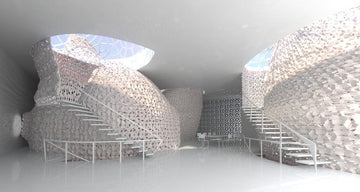Pros of DIY 3D Printer Kits:
Cost-Effectiveness: DIY 3D printer kits are often more budget-friendly compared to pre-assembled printers. Kits provide a way for individuals to enter the world of 3D printing without breaking the bank. By investing time and effort into assembly, you can save a substantial amount of money while still obtaining a fully functional printer.Learning Experience: One of the most significant advantages of building a 3D printer from a kit is the invaluable learning experience it offers. Assembling the printer provides hands-on knowledge about the various components, mechanics, and electronics involved. This knowledge can empower you to troubleshoot and maintain your printer effectively.
Customization: DIY kits often allow for a higher level of customization. You can choose to upgrade specific components, modify features, or even build additional functionalities into your printer. This level of personalization can cater to your specific needs and preferences, making the printer truly yours.
Problem-Solving Skills: Building a 3D printer from scratch encourages the development of problem-solving skills. You'll encounter challenges along the way, such as calibration issues or troubleshooting electrical connections. Overcoming these hurdles fosters critical thinking and enhances your ability to diagnose and solve problems in the future.
Cons of DIY 3D Printer Kits:
Complex Assembly: While the assembly process is an educational experience, it can also be quite complex and time-consuming. Novices might find themselves overwhelmed by the intricate instructions and numerous components. A high level of patience and attention to detail is required to ensure proper assembly.
Technical Expertise: Building a 3D printer demands a certain level of technical expertise. Understanding electronics, mechanics, and software is essential to ensure a successful build. Beginners might face difficulties in troubleshooting issues that arise during or after assembly.
Quality and Reliability: The quality of prints and the overall reliability of the printer can be compromised if the assembly is not done correctly. Inaccurate calibration, misaligned components, or poor wiring can lead to inconsistent print results and decreased performance.
Time-Consuming: DIY 3D printer kits can be time-consuming. The assembly process may take several hours, days, or even weeks, depending on your familiarity with the technology and the complexity of the kit. This time investment might not be suitable for those seeking immediate results.
Conclusion:
Building a 3D printer from a DIY kit offers a blend of excitement, learning, and challenges. The cost-effectiveness, hands-on experience, and potential for customization are compelling reasons to embark on this journey. However, the complex assembly process, technical requirements, and potential quality issues should not be underestimated. Before diving in, consider your level of expertise, the time you can invest, and your willingness to troubleshoot and learn along the way. Whether you choose a pre-assembled printer or a DIY kit, 3D printing continues to reshape the way we create and innovate.






